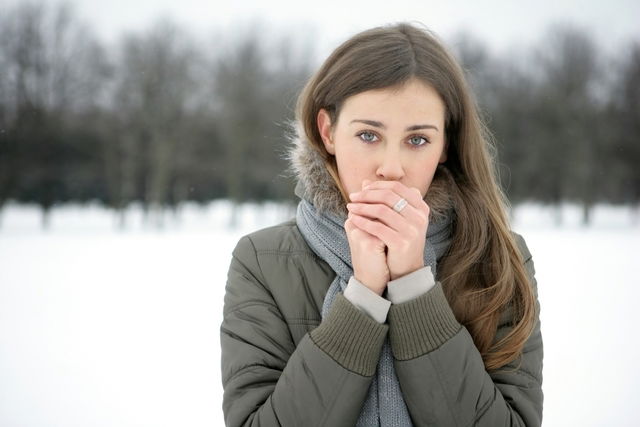Hypothermia is characterized in a drop of body to less than 35ºC. It occurs when the body loses more heat than it can generate, and is normally caused by prolonged exposure to cold environments.
A decrease in temperature occurs in three stages:
- Body temperature drops by 1 or 2 ºC, causing chills and slight numbness in the hands or feet
- Body temperature drops by 2 to 4 ºC, which causes the extremities to start turning blue
- Body temperature drops even further, which can lead to a loss of senses and difficulty breathing.
If you notice the early signs of hypothermia, it is important to increase your body temperature with warm clothing and by moving to a warm place. Prolonged exposure to low temperatures can cause serious effects on the body.

Common symptoms
The main symptoms of hypothermia vary depending on its severity. The most common ones are:
Moderate hypothermia can also lead to a lack of attention, memory loss or drowsiness, which may progress to amnesia as the condition worsens.
In babies, the signs of hypothermia are cold skin, a reduced reaction, lethargy and refusal to eat. If you notice symptoms of hypothermia in a child, seek medical attention immediately.
Main causes
The most common cause of hypothermia is prolonged exposure to cold weather, environment or water.
Other situations that can cause hypothermia include:
- Malnutrition
- Heart diseases
- Low thyroid activity
- Excessive alcohol intake
Furthermore, there are some risk groups that are more prone to to drops in body temperature, like children, older adults, those who abuse alcohol or drugs, and those with mental disabilities that prevent the correct assessment of bodily needs.
Although most cases of hypothermia can be reversed without causing serious damage to the body, body temperature can continue to drop if treatment is not initiated, which can be life-threatening.
Treatment options
Treatment for hypothermia should be initiated as quickly as possible to prevent problems like a such as stroke, heart attack or even organ failure and death.
It is important to call an ambulance and to warm the victim slowly, either by placing them in a warmer environment, removing wet or cold clothing, or placing blankets and hot water bottles over them.
In the more serious cases, treatment must be carried out in a hospital setting with more specific techniques such as dialysis that involves heating the blood and heated IV solutions.
How to prevent
The best way to prevent hypothermia is to dress appropriately for cold weather and to avoid prolonged exposure to cold environments or water. If you are wearing wet clothes, you should remove them to keep your skin as dry as possible. This care is especially applicable to babies and young children, who are at greater risk of losing heat and are less likely to report cold sensations.






























